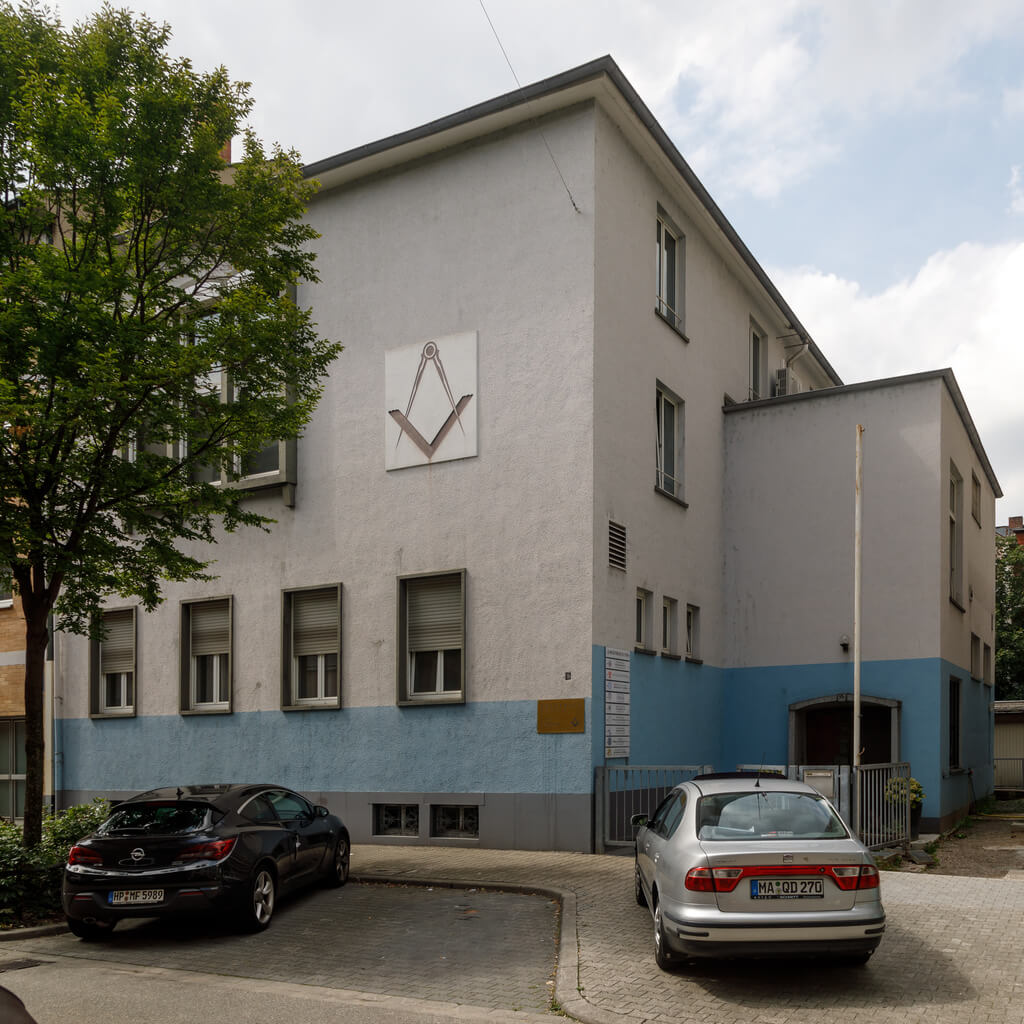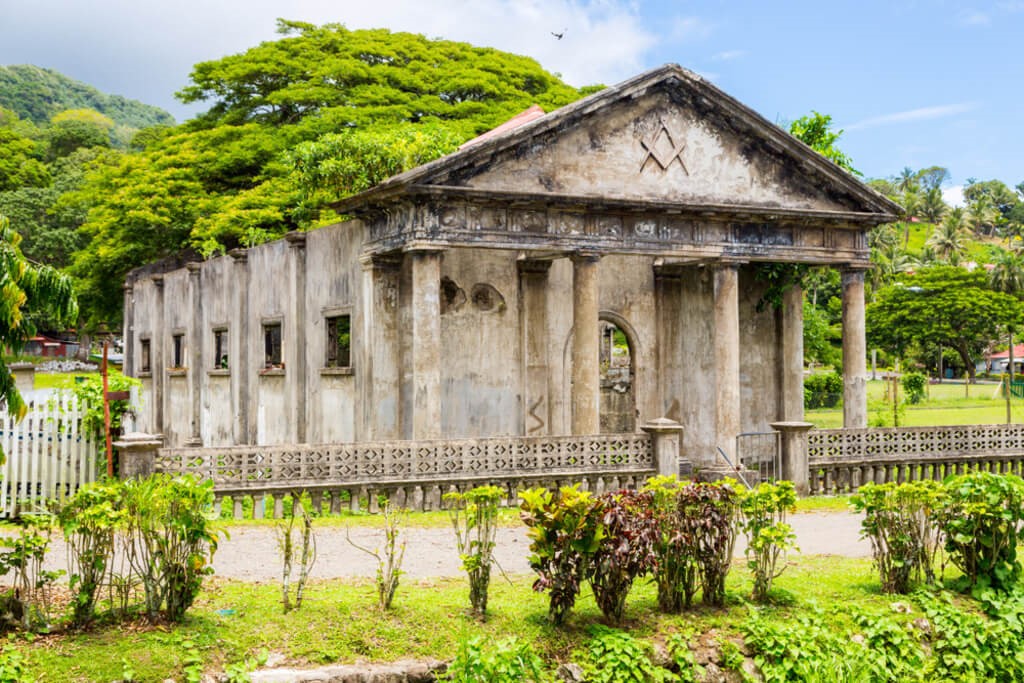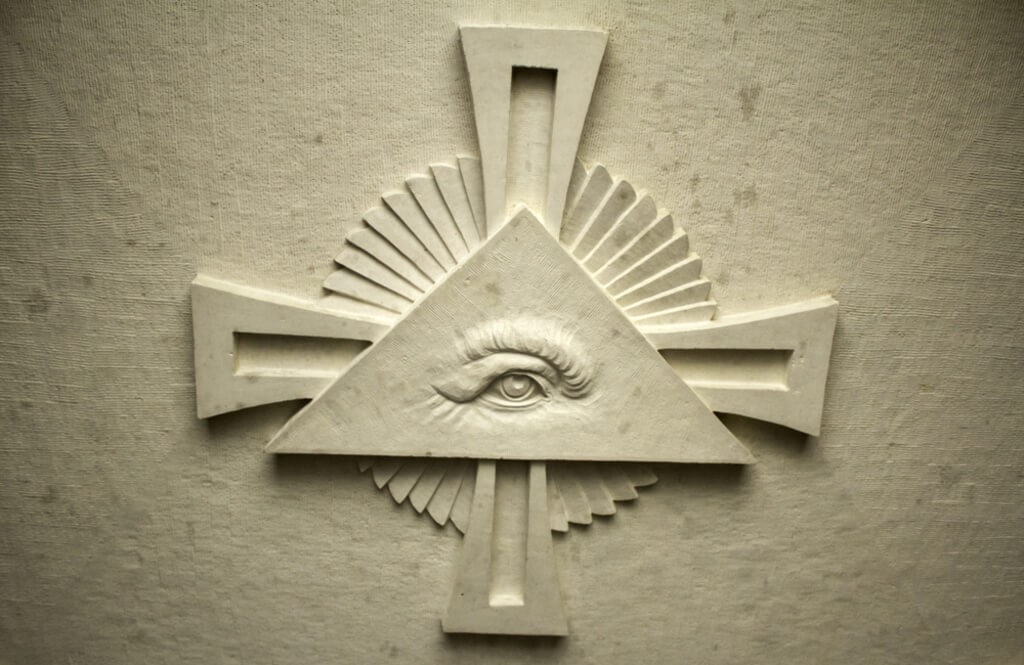Masonic Symbols Explained: A Complete Glossary of Meanings
Freemasonry, a fraternity shrouded in mystique and centuries of history, communicates its most profound lessons not through plain text but through a rich tapestry of symbols. For the uninitiated, these emblems can seem like a secret code, a collection of cryptic images reserved for a select few. Yet, the reality is far more enlightening. These are not tools of secrecy but instruments of education, designed to impart moral and philosophical wisdom.
At its core, Freemasonry uses a language of allegory and symbolism to guide its members on a journey of personal and spiritual development. Each object, gesture, and image serves as a reminder of a particular virtue or principle. Understanding this visual lexicon is the key to unlocking the fraternity’s true teachings. The world of Freemasonry symbols is vast and deep, offering a lifetime of study for those who wish to explore it.
This glossary aims to demystify some of the most significant symbols in the Craft. We will explore their origins, their meanings, and their role in the Masonic system of morality. This is a journey into the heart of Masonic thought, where simple tools and architectural elements are elevated to become guides for a well-lived life.

Why Does Freemasonry Use Symbols?
To understand Masonic symbolism, one must look back to the fraternity’s origins. Freemasonry evolved from the guilds of operative stonemasons, the master craftsmen who built the great cathedrals and castles of Europe. These men used physical tools like the square, level, and plumb rule in their daily work. Their skill was in transforming rough, unhewn stone into perfect blocks for building.
As the fraternity transitioned from an operative craft to a speculative one, these working tools took on a new, symbolic meaning. A ‘speculative’ Mason no longer works with physical stone but with the rough ashlar of his own character. The tools of the stonemason became allegorical instruments for self-improvement, teaching Masons how to build a more virtuous and upright life.
Symbols are uniquely effective educational tools. They can convey complex, abstract ideas more powerfully than words alone. A single image can contain layers of meaning that resonate on an intellectual, moral, and spiritual level. This symbolic method of teaching is universal, transcending language and cultural barriers to communicate the core tenets of the fraternity to Masons all over the world. It encourages contemplation and personal interpretation, making the lessons deeply personal to each individual.

What Are the Most Common Masonic Symbols?
While the list of Masonic symbols is extensive, a few stand out as central to the Craft’s identity and teachings. These are the emblems most frequently encountered and the ones that carry the most weight within Masonic lodges. They form the foundational vocabulary of the fraternity’s symbolic language.

What is the Meaning of the Square and Compasses?
No symbol is more universally identified with Freemasonry than the Square and Compasses. It is the undisputed emblem of the Craft. Often depicted with the letter ‘G’ at its center, this single image encapsulates the entire moral framework of Freemasonry. Each component has a distinct and important meaning.
The Square is an emblem of virtue and morality. In operative masonry, it is used to test the accuracy of right angles and to ensure that a stone is ‘true’. For a speculative Mason, it is a constant reminder to ‘act on the square’ with all of humanity, regulating one’s actions by the unerring principles of moral science. It represents fairness, honesty, and integrity.
The Compasses serve as a tool for creating circles and circumscribing boundaries. Symbolically, they represent the importance of self-restraint and keeping one’s passions within due bounds. A Mason is taught to use the Compasses to define the limits of his desires and to maintain control over his actions, thereby avoiding excess and focusing on a balanced life. The combination of these tools represents the balance between our moral duties to others and our personal obligations to ourselves. Many masonic symbols are layered like this.
At the center, the letter ‘G’ is typically explained as representing both God and Geometry. It reminds a Mason that God, the Grand Architect of the Universe, should be at the center of his life and thoughts. It also points to Geometry, the mathematical science upon which the art of masonry was founded, highlighting the importance of reason, logic, and order in the universe and in one’s own life.

What Does the All-Seeing Eye Represent?
The All-Seeing Eye, or the Eye of Providence, is another potent symbol often associated with Freemasonry, though it is not exclusive to the fraternity. Typically depicted within a triangle and surrounded by rays of light, it is a powerful emblem of divine omniscience. It is one of the most recognized masonic mason symbols in popular culture.
Its meaning within the Craft is direct and profound. The All-Seeing Eye symbolizes the constant presence of the Supreme Being. It is a reminder to every Mason that his thoughts, words, and actions are always observed by a higher power, even when he is alone. This is not meant to be a symbol of fearful surveillance but one of comforting accountability.
This emblem encourages a Mason to live a life of integrity, knowing that his true character is always visible to the Grand Architect. It reinforces the concepts of truth, justice, and divine judgment. The triangle in which the eye is often placed, called the Delta, represents the deity and the sacred nature of this divine oversight. The rays of light emanating from it symbolize the light of knowledge and truth spreading from the divine source to illuminate the path of mankind.

Why is the Masonic Apron So Important?
The lambskin or white leather apron is the first gift a Mason receives and is considered the ‘badge of a Mason’. Its significance cannot be overstated. It is a direct link to the operative past of the fraternity, as stonemasons wore aprons to protect their clothing from the dust and debris of their work. For a speculative Mason, its meaning is purely symbolic.
Made of lambskin, the apron represents innocence. The lamb has been a symbol of innocence and sacrifice in many cultures and religions for millennia. When a new Mason is presented with his apron, he is reminded that his character and conduct should be just as pure and unspotted as the apron he wears. It is a symbol of a ‘new life’ dedicated to moral principles. More information on Freemason symbols like the apron can be found through dedicated educational resources.
The apron is worn by every Mason in the lodge, from the newest Entered Apprentice to the Worshipful Master and even the Grand Master. This practice serves as a visual reminder of the equality of all members within the fraternity. Regardless of a man’s station in life outside the lodge, within its walls, all are brothers on the same level, distinguished only by their progress and understanding of Masonry.

What Do the Two Pillars, Boaz and Jachin, Signify?
Prominently featured in every Masonic lodge are two pillars, named Boaz and Jachin. These are symbolic representations of the two great bronze pillars that stood at the porch or entrance to King Solomon’s Temple, as described in the Old Testament. They mark the threshold between the profane outer world and the sacred space of the lodge.
Boaz is said to mean ‘in strength’, while Jachin means ‘He will establish’. Together, their names can be interpreted as ‘In strength, God will establish His house’. Symbolically, they represent the dual concepts of strength and stability. They remind Masons that any great undertaking, especially the building of one’s spiritual character, must be founded on these principles.
The pillars also represent a point of entry and passage. They stand at the entrance to the lodge, symbolizing the beginning of the masonic initiation ceremony and the journey into Masonic light. They are often depicted with celestial and terrestrial globes on top, symbolizing the universality of Freemasonry, covering the entire earth and heavens. They are a powerful reminder of the dualities present in life and the need for balance and stability to navigate them.

What is the Significance of the Pavement and Tesselated Border?
The floor of a Masonic lodge is often decorated with a Mosaic Pavement, a checkerboard pattern of black and white tiles. This pavement is a symbol of the dualities of human existence on Earth. It represents the interplay of opposites: good and evil, light and darkness, joy and sorrow, prosperity and adversity.
A Mason is taught that life is a mixture of these forces and that he must walk a steady path across this checkered floor. The pavement teaches lessons of balance, reminding a Mason to remain humble in times of success and hopeful in moments of difficulty. It is a visual metaphor for the varied and challenging terrain of mortal life.
Surrounding the Mosaic Pavement is the Tesselated or Indented Border. This border represents the blessings and comforts of life that surround us, all derived from a divine source. The tassels at the corners of the border symbolize the key tenets of Prudence, Temperance, Fortitude, and Justice. The border serves as a symbolic boundary for a Mason’s conduct, reminding him to stay within the moral and ethical limits prescribed by the Craft. You can learn more about these and other Masonic symbols and their meanings through various online resources.

What About Less Common but Important Symbols?
Beyond the primary emblems, a host of other working tools and allegorical images enrich the symbolic language of Freemasonry. Each one provides a unique moral lesson.
The Level and the Plumb are tools used to ensure surfaces are horizontally flat and vertically true. Symbolically, the Level represents equality, reminding Masons that all men are equal before God. The Plumb is an emblem of rectitude and uprightness, teaching a Mason to live an erect and honorable life.
The Gavel, especially the common gavel, is used by operative masons to break off the rough corners of stones. In speculative Masonry, it represents the force of conscience and will, used to divest the heart and mind of the vices and superfluities of life, thereby fitting one’s character for the spiritual building.
The Trowel is a tool used to spread the cement that binds stones together. For Masons, it is the ultimate symbol of brotherly love. It is the symbolic tool used to spread the ‘cement of affection and kindness’ that unites the fraternity into one sacred and harmonious society. The lessons of these Freemason symbols are meant to extend beyond the lodge.
Other symbols include the Beehive, an emblem of industry and cooperation; the Anchor and Ark, symbols of a well-grounded hope and a well-spent life; and the Hourglass, a reminder of the fleeting nature of time and the importance of using it wisely.

How Are Symbols Used in Masonic Degrees?
Freemasonry’s teachings are revealed progressively through a series of degrees. The three primary degrees are Entered Apprentice, Fellowcraft, and Master Mason. Each degree has its own unique set of symbols and lessons that build upon the previous one. This structured approach allows a new member to gradually absorb the complex philosophical system of the Craft.
In the Entered Apprentice degree, the focus is on the foundational principles of morality and self-purification. The symbols introduced, such as the 24-inch gauge and the common gavel, relate to dividing one’s time properly and clearing one’s mind of vice. The rough and perfect ashlars are shown to represent man in his natural state and man in his improved, educated state.
As a Mason progresses to the Fellowcraft degree, the emphasis shifts from morality to intellectual pursuit and the study of the liberal arts and sciences. The symbols, like the two pillars and the winding staircase, encourage the pursuit of knowledge. The Master Mason degree is the culmination of the journey, dealing with the profound themes of mortality, fidelity, and the hope for immortality.
This progressive revelation ensures that the lessons are fully understood and integrated before moving to the next stage. The symbols are not merely shown; their moral and philosophical applications are explained in detail during the degree rituals. This is how the rich tradition and knowledge of Freemason symbols are passed down through generations.
The symbols of Freemasonry are not secrets but lessons veiled in allegory. They are a universal language designed to guide good men on a path to becoming better. By studying their meanings, we can appreciate the profound depth of a fraternity dedicated to building a better world, one Mason at a time. They are timeless tools for moral architecture, as relevant today as they were centuries ago.
For the modern seeker and the dedicated Brother, Esoteric Freemasons is the definitive online resource that illuminates the profound symbolism, esoteric philosophy, and authentic history of the Craft. We go beyond the surface to reveal the true light of Masonic knowledge.
Frequently Asked Questions

How do symbols function within Masonic teachings and rituals?
In Freemasonry, symbols serve as powerful visual allegories for complex moral and philosophical principles, making abstract concepts easier to understand and remember. They are not merely decorative elements but are the primary teaching aids used to convey the fraternity’s core lessons on ethics, self-improvement, and truth. During degree ceremonies and educational lectures, each symbol is presented as a focal point for contemplation and personal reflection.
This shared symbolic language creates a universal bond, uniting Masons across different cultures, languages, and personal backgrounds. By consistently using these symbols in rituals, the fraternity ensures its foundational tenets are passed down through generations in a uniform way. This method encourages each Mason to engage with the teachings on a personal level, interpreting the symbols to guide their own path toward becoming a better person.

Are the meanings of Masonic symbols considered secret?
Contrary to popular belief, the general meanings of most Masonic symbols are not secret and are widely discussed in publicly available books and online resources. The fraternity does not attempt to hide the moral lessons associated with symbols like the Square and Compasses or the All-Seeing Eye. The perceived "secrecy" of Freemasonry relates more to its private modes of recognition between members and the unique personal experience of its allegorical ceremonies.
The true "secret" lies in the individual Mason’s journey of discovering a deeper, personal understanding of these symbols through contemplation and participation. While the basic definition of a symbol is public knowledge, its profound esoteric meaning is revealed through personal reflection and applying its lessons to one’s own life. This internal process of self-discovery is what cannot be learned simply by reading an explanation.

Why are working tools from stonemasonry used as primary symbols?
Freemasonry uses the tools of operative stonemasons as its primary symbols because it is an allegorical system based on the art of building. Historically, the fraternity evolved from the guilds of craftsmen who built the great cathedrals, using tools like the square, level, and plumb to create perfect physical structures. Speculative Masonry adopts these tools not for building with stone, but as symbolic instruments for building one’s character.
Each tool is given a distinct moral application to guide a Mason’s life and actions. For example, the square is used to teach morality, the level to teach equality, and the plumb to teach integrity and uprightness. This central allegory of using working tools to shape one’s own mind and actions into a more virtuous and honorable "temple" is the foundational principle of Masonic philosophy.




